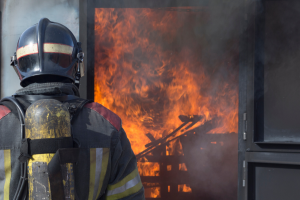
10 Essential Safety Tips when Working at Height
Within the construction industry, falls are the main cause of death and are also too common in other industries. In many cases, they result from complacency or lack of knowledge and so are preventable. There are several steps you can take to prevent or minimise accidents when working at height.
1. Determine Fall Protection needed
The extent of fall protection generally depends on how often working at height occurs, how long it takes and how near it is to any potential hazard. Work that is infrequent (once a month or less), short-term (two hours or less) and is more than fifteen feet from a hazard will require no fall protection. Any that is more frequent, longer-term and closer will need some protection.
2. Choosing the Correct Equipment
Different protective equipment may be needed depending on the situation. When working against a structure on flat ground, scaffolding may be the most appropriate while some type of lift may be better at other times or a ladder may be sufficient. It’s important that you can assess the situation and decide on the best equipment.
3. Selecting the Best PPE
If you’re using a Personal Fall Arrest System, ensure it’s appropriate for the job and is of the best quality. Properly certified equipment can be relied on but more expensive versions often have extra features you may need, such as extra D-rings, improved comfort, heat protection or a better fit.
4. Use Railings
When working at height, fitted railings give an extra layer of protection. Different types are available for various roof styles and they keep workers safe with no additional precautions or specific training.
5. Inspect PPE
No matter how high the quality of personal equipment you buy, whether lanyards, harnesses or anything else, it’s of little use if it’s faulty. All equipment should be inspected at least annually and replaced if worn or defective. It’s also essential that users check their own equipment every time they use it and so need to be aware of what they’re looking for.
6. Be Aware of Fall Distances
A lanyard or any other type of fall protection equipment is no good if it fails to stop your fall before impact and so you need to be sure it’s the correct size. The fall distance will be the length of the lanyard when deployed plus your body length below the D-ring, 3.5 feet to allow for the deployment of the deceleration device and an allowance for any sag. That typically means a height of 18.5 feet to use a six-foot lanyard effectively.
7. Choose a Strong Anchor Point
Having the correct equipment isn’t much good if the point it’s anchored to fails. Always clamp to a strong anchor point, such as structural steel, that you know will hold your weight.
8. Use Ladders Correctly
Employees often don’t take too much care when using ladders and this leads to many accidents. Three main principles should be followed for safe use:
- the ladder should extend three feet above the climbing level
- for every four feet of height, the ladder base needs to be one foot from the structure
- always have three points of contact with the ladder, which means nothing should be carried in the hands when climbing.
9. Use Lifts Properly
Fall protection is needed in lifts, which generally means occupants being secured to a proper anchor point. Small mistakes can be fatal so care is essential.
10 Train Adequately
Working at height is dangerous and proper training is vital to ensure safety. We can provide all the working at heights training needed to ensure workers are confident at height and take all the necessary precautions to ensure their own safety and the safety of others.

